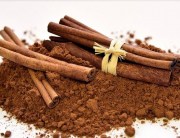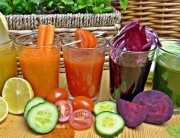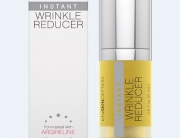Amino acids are the basic building blocks for the various proteins that are used for the structure and function of our body.
About 20 amino acids are useful for the functioning of the human body, including 8 that it cannot produce by itself: essential amino acids.
Amino acids, peptides, proteins, what are they?
Amino acids are small molecules of organic acids called “amino acids” because they contain nitrogen atoms.
A peptide is a set of different amino acids that are bound together to ten or more. When they come back together, they can form large polypeptides. If they have the right shape, they’re called proteins.
The proteins in the food we eat cannot be directly absorbed and used. They are “broken down” into peptides by our digestive juices, acids and enzymes. These peptides can then pass through the intestinal barrier into the bloodstream. The amino acids they are made of are used to make our own proteins.
Proteins
Proteins are necessary for our body to form its structure (for example: our muscles, the collagen in our skin, bones or ligaments, the components of our cells, etc.).
They can also be enzymes, hormones, neurotransmitters which play a role in the body’s metabolic reactions.
Certain proteins are used for the transport of fats, oxygen or hormones in the blood, but also for our immune system, etc. In fact, the vast majority of the functions of our cells are performed by proteins.
Proteins in our diet
Dietary proteins are present mainly in animal products (meat, offal, bone marrow, eggs, dairy products, skin, etc.), but also in plants (legumes, nuts, whole grains, shoots, algae, vegetables, etc.), usually in smaller and somewhat less easily assimilated quantities.
In our diet, health institutions consider a daily intake of about 0.8 grams of protein per kilogram of our weight necessary (World Health Organization). Unlike fats and sugars, the body cannot store protein as a reserve.
For a 65 kilogram adult, these 49 grams of protein represent about 150 grams of animal meat per day. As we know that protein is also present in all other foods, we can see that the daily protein intake of an average Westerner would often be too high (e.g. 1.7 g/kilo on average for Americans who can eat more than 250 g of steak or chicken a day) for people who are often sedentary. Daily intake is naturally lower for vegetarians. In addition, athletes or those who need to build muscles will make better use of them.
Above all, the proteins we eat should provide us with all our essential amino acids every day and compensate for our daily losses, which are estimated to average 0.6 g/kilo of our weight (Dupin et al., 1992).
It should be noted that our body recycles a large amount of protein (especially at night) thanks to autophagy, which ensures a consistent contribution of different amino acids.
The best sources of protein
Sardine fatty fish are very good sources of protein, which also provide omega-3 fatty acids. Farmed fish that are fed outside the standard feed and often treated with antibiotics etc. should be avoided.
Other good animal proteins are: eggs, poultry, seafood and free-range animals, organic if possible.
Goat cheese
Dairy products contain protein. The problem is that today milk is produced industrially, denatured, pasteurized and processed. Without going into detail, goat (or even sheep) fermented milk products are among the healthiest: yogurt, feta cheese, and kefir. Let us remember that the composition of goat’s milk is very close to that of human milk.
Good sources of vegetable protein are chia, hemp, quinoa, buckwheat, amaranth, rice, nuts, pulses (peas and beans), sprouted or fermented soya, seaweed including spirulina, fungi, sprouted seeds…
Studies suggest that a more balanced intake of animal and vegetable protein is beneficial for longevity. For most Westerners, this means eating less animal protein and more plant protein.
Protein supplements
Protein supplements are pure protein powders or protein with carbohydrates. They are especially known to help athletes increase their muscle mass. They are also used in weight loss diets because, on the one hand, proteins cannot be converted into fat and, on the other, they have a higher satiating power than carbohydrates (sugars). Finally, they can also be useful for older people who have lost a lot of muscle mass.
Protein powder
These protein supplements are usually made from milk, whey, soy, eggs, peas, rice etc. Some products provide peptides directly: they are proteins that are hydrolyzed to form peptides (or hydrolyzed), which greatly facilitates digestion and assimilation. Some products provide amino acids directly.
In fact, they are absorbed more slowly and less easily than peptides. The intestine also has specific carriers to absorb peptides.
For the 8 essential amino acids to be well assimilated and used by the body, they must be in balanced proportions. The nutritional quality of protein supplements also varies greatly.
Those that appear to be the most nutritious and with the least digestive problems or intolerances are made from whey or rice (possibly hydrolyzed). Soy proteins are balanced in their amino acids but too rich in omega-6 (which promotes inflammation) and in anti-nutrients (lectins, phytic acid, etc.) which can irritate the intestines and limit the absorption of minerals.
These food supplements can also be useful for people who have a deficiency due to an over-refined diet and/or lack of animal products and plant proteins.
The powders of one or a few specific amino acids are food supplements used mainly by athletes (especially the “fashionable” amino acids: valine, leucine, isoleucine) to build muscle. They do not represent a balanced protein intake, but are products for specific use.
Anti-aging and proteins
We have seen that the WHO recommended intake is 0.8 g/kg/day. Recent studies show us that high protein levels are harmful to longevity and promote degenerative diseases and cancer development. However, this is particularly true before the age of 65.
From the age of 65 (on average), protein digestion/assimilation is less efficient because our digestive system tends to use a higher proportion of amino acids in food itself.
Scientists have also shown that protein intake can be higher from this age onwards. This would promote longevity and reduce the risk of degenerative diseases.
Amino acids and anti-aging
The 20 basic amino acids
They are used to produce our proteins. They are: glutamic acid, aspartic acid, alanine, arginine, asparagine, cysteine, glutamine, glycine, histidine, isoleucine, leucine, lysine, methionine, phenylalanine, proline, serine, threonine, tryptophan, tyrosine, valine, etc. They are like “building blocks” that, when put together, form peptides and then proteins. Our intestine absorbs peptides and certain amino acids well, while larger proteins cannot cross the intestinal membrane. These 20 amino acids can combine to form the tens of thousands of proteins in living organisms.
It should be noted that some peptides have specific properties that have been used in the anti-aging industry for several years, such as :
- the stimulation of muscle synthesis
- Tissue repair
- to strengthen the immune system
- the production of hormones, etc…
The 8 essential amino acids
Eight amino acids are essential for the proper functioning of our body, which cannot produce them alone: lysine, tryptophan, phenylalanine, leucine, isoleucine, valine, methionine, threonine.
Therefore, they must be found every day in our diet. In principle, a varied diet with unrefined and high quality products should provide us with these amino acids in sufficient quantities. However, deficiencies of certain essential amino acids are not uncommon today.
A good proportion of these amino acids is also necessary for their proper assimilation. If an amino acid is only present in our food ration in very small amounts, it is actually only absorbed to a very limited extent. This is called the limiting factor. Especially tryptophan is often less abundant in our modern diet. It can therefore prevent the assimilation of other amino acids and promote deficiencies.
Each food, taken individually, does not have a perfect distribution of essential amino acids, with the exception of egg white, which is considered the reference protein.
Cereals are generally low in lysine, while legumes contain little methionine. It should be noted that many traditional vegetarian dishes combine cereals and legumes (chickpeas/wheat; rice/soybean; maize/red beans, etc.). This does not seem to be a coincidence, as it allows all the amino acids to be supplied in balanced proportions and avoids this famous limiting factor.
Amino acid supplements
Amino acids can be used as food supplements (when missing) or as dietary supplements (for a “therapeutic” effect, depending on the function in which they are involved). Here are the main amino acids used in anti-aging medicine:
- tryptophan and tyrosine, which can help improve mood disorders and depressive tendencies (they are precursors of the neurotransmitters serotonin and dopamine, which are released during depression)
- Arginine and ornithine in the synthesis of growth hormone, which decreases sharply with age. Genf20 Plus is an HGH supplement that can raise HGH levels naturally.
- Arginine and betaine to support liver detoxification,
- Taurine, which also has a detoxifying and antioxidant effect and also supports the muscle and nervous system.
- Glutamine, which can be useful in disorders of intestinal permeability to repair the mucous membrane (at a dose of 1.5 to 2 g per day for at least one month)
- Creatine, which promotes energy production in muscle cells and may be of interest in chronic fatigue
Cysteine and anti-aging
 Cysteine plays a role in hair growth and seborrhea regulation. It has a special status in the field of anti-aging. It allows the body to produce glutathione, which is an important antioxidant. With age, this production becomes less and less efficient and the body’s defenses against oxidative stress become less and less effective. Some scientists even speak of a cysteine deficiency syndrome in old age. Therefore, it seems important to ensure or even increase a sufficient supply of cysteine with increasing age.
Cysteine plays a role in hair growth and seborrhea regulation. It has a special status in the field of anti-aging. It allows the body to produce glutathione, which is an important antioxidant. With age, this production becomes less and less efficient and the body’s defenses against oxidative stress become less and less effective. Some scientists even speak of a cysteine deficiency syndrome in old age. Therefore, it seems important to ensure or even increase a sufficient supply of cysteine with increasing age.
Glycine and anti-aging
Glycine is particularly interesting in the field of anti-aging. Some consider it a semi-essential amino acid that has become too poor in the modern Western diet. It contributes to the synthesis of collagen, thus strengthening our joints and skin, among other things. It promotes the production of energy in our mitochondria.
In addition, the latest studies show that glycine allows the conversion of methionine in the liver, and animals supplemented with glycine have more or less the same effects as methionine or protein restriction: increased longevity, reduction of IGF-1 (the growth hormone derivative), insulin and triglycerides …
A 2014 New Zealand study finally concluded that glycine could regulate Igf-1 expression: sufficient for tissue repair or cure, but not too much to prevent accelerated aging and an increased risk of cancer.
Our current diet is low in glycine compared to our distant ancestors who particularly enjoyed eating the skin, tendons, cartilage and even bones of their prey. Our bodies would easily be deficient in glycine today, and it would often be wise to bring in 5 to 10 grams of glycine a day.
Acetyl-L-Carnitine
It is used to activate the energy production in our cells, especially in cases of chronic fatigue. It acts in the mitochondria, our “small power plants”, which burn oxygen and glucose to produce energy, but whose activity decreases with age and the damage of oxidation. The average dose is 750 to 1000 mg per day.
When is a protein or amino acid supplement necessary?
Amino acid deficiency is rare. If you feel fit and have a diet rich in high quality protein, you probably do not need it.
However, if you train intensively, or if you are trying to regain muscle mass in an older person (especially in the case of sarcopenia), or if certain functions seem to be disturbed by an amino acid deficiency, it may be helpful to take protein supplements. A distinction must be made between two cases:
- deficiencies in essential amino acids
Sometimes they can be observed when the diet is not varied enough or when the vegan diet is too restrictive or unbalanced. Tryptophan, in particular, has a low resistance to heat.
In this case it is possible to supply these amino acids by supplementation, but above all by correcting the diet, which should always be the case in the long term.
- Age-related protein deficiency
They are due to an imbalance in the diet and/or a poorer absorption of protein the aging digestive tract. They are manifested by a drop in immunity, fatigue and, in particular, muscle atrophy or, even worse, sarcopenia when a real movement disorder occurs.
In these particular cases, it will be necessary to take higher doses (see how to keep muscles) because you know that all the proteins in the world will have a very limited effect in the absence of physical activity. In this case, the daily intake can be increased to 1.5g/kilo to 1.8g/kilo, especially after the age of 65.
It is then possible to add 30 to 60 grams of protein powder with a balanced content of essential amino acids daily, especially if the diet does not yet have the above mentioned values.


























Leave A Comment